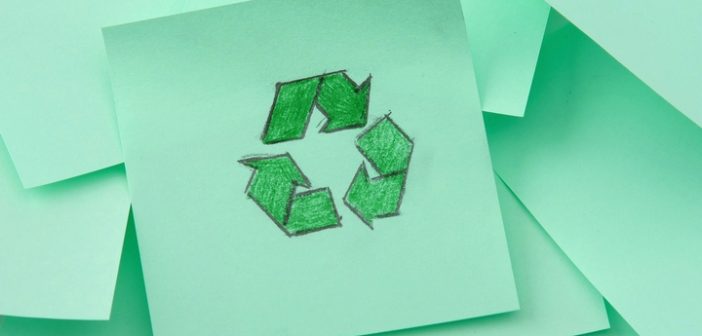How much paper do you use in a day? Better question, how much do you recycle, or even mistaking recycle, this paper? The short answer is a lot, but the long answer is: what can you do to be better? Well, it begins by getting to know more about the facts and statistics behind recycling paper.
Here are 10 paper recycling facts and figures you need to know:
1. Americans use the most amount of paper.
 It is no secret that being the world’s largest economy and having one of the biggest populations in the world that the United States consumes a lot of energy and resources. This does include paper. In fact, Americans use approximately 8 million tons of paper every year, which is roughly 680 pounds per person. That is also about seven trees a year.
It is no secret that being the world’s largest economy and having one of the biggest populations in the world that the United States consumes a lot of energy and resources. This does include paper. In fact, Americans use approximately 8 million tons of paper every year, which is roughly 680 pounds per person. That is also about seven trees a year.
2. The average household tosses away 13,000 pieces of paper per year.
 Unfortunately, a lot of this paper goes to waste in these households. It is estimated that the average household tosses away 13,000 separate pieces of paper per year, and most of it is packaging and junk mail. Can you imagine if we didn’t have junk mail anymore? We would save a lot of paper!
Unfortunately, a lot of this paper goes to waste in these households. It is estimated that the average household tosses away 13,000 separate pieces of paper per year, and most of it is packaging and junk mail. Can you imagine if we didn’t have junk mail anymore? We would save a lot of paper!
3. 40% of all landfill waste is paper
 Landfills have become an important aspect of waste management. They have also become modern, state-of-the-art facilities that produce energy. That said, analysts say that 40 percent of all waste going to landfills is paper. While landfills are growing in size, reducing paper consumption and waste will allocate more landfill space and extend their lives.
Landfills have become an important aspect of waste management. They have also become modern, state-of-the-art facilities that produce energy. That said, analysts say that 40 percent of all waste going to landfills is paper. While landfills are growing in size, reducing paper consumption and waste will allocate more landfill space and extend their lives.
4. Newspaper can be recycled into different items.
 Now, recycling newspapers can be damaging for the environment because they need to be deinked with harmful chemicals. That said, these risks might be offset because these newspapers can be recycled into new newspaper, gift boxes, game boards, egg cartons, and insulation.
Now, recycling newspapers can be damaging for the environment because they need to be deinked with harmful chemicals. That said, these risks might be offset because these newspapers can be recycled into new newspaper, gift boxes, game boards, egg cartons, and insulation.
They’re more than just catching up on the news, wrapping up fish for dinner, or lining your bird cage and/or kitten litter box.
5. 77% of office paper is wasted.
 The average office produces a pound of paper per employee, but 77 percent of that is wasted. But what is even more fascinating and egregious is that most of this wasted paper is high-grade paper. In other words, offices are paying a premium for paper, even though that paper is just going to the trash instead of being recycled properly.
The average office produces a pound of paper per employee, but 77 percent of that is wasted. But what is even more fascinating and egregious is that most of this wasted paper is high-grade paper. In other words, offices are paying a premium for paper, even though that paper is just going to the trash instead of being recycled properly.
6. There are many different types of office paper.
 When office paper is properly recycled, it is recycled into common household products, including toilet paper, paper towels, and tissue paper. Remember that the next time you head to the bathroom or clean up your child’s sweet potato mash that he or she threw on the ground.
When office paper is properly recycled, it is recycled into common household products, including toilet paper, paper towels, and tissue paper. Remember that the next time you head to the bathroom or clean up your child’s sweet potato mash that he or she threw on the ground.
7. Recycling paper saves many different natural resources.
 Typically, when we discuss recycling paper, we always talk about saving the trees. However, did you know that when you recycle paper you’re also saving a myriad of other natural resources? Here is a brief list of what you’re saving and what you’re preventing:
Typically, when we discuss recycling paper, we always talk about saving the trees. However, did you know that when you recycle paper you’re also saving a myriad of other natural resources? Here is a brief list of what you’re saving and what you’re preventing:
- Crude oil
- Landfill space
- Water
- Air pollution
- Energy
The less paper you use, the less oil, water, and energy you’re generating.
8. Paper mills save more money using waste paper than new pulp.
 To construct a paper mill designed to use waste paper can cost as much as 80 percent less than the cost of a paper mill using new pulp. Now, that is truly fascinating, and in an economy where every business is trying to slash their costs, this is something that industry may need to consider.
To construct a paper mill designed to use waste paper can cost as much as 80 percent less than the cost of a paper mill using new pulp. Now, that is truly fascinating, and in an economy where every business is trying to slash their costs, this is something that industry may need to consider.
9. Certain items are surprisingly not recyclable.
 Let’s be candid: we all try to recycle to help the planet. Unfortunately, we tend to do the wrong thing when we’re recycling, and this includes recycling the wrong things. So, what can’t be recycled?
Let’s be candid: we all try to recycle to help the planet. Unfortunately, we tend to do the wrong thing when we’re recycling, and this includes recycling the wrong things. So, what can’t be recycled?
Here is a list (they may surprise you):
- Carbon paper
- Coffee cups
- Pizza boxes
- Candy wrappers
- Tissues
- Paper towels
So, you see, you have been recycling Tim Hortons cups this whole time, even though you shouldn’t have!
10. Recycling paper may save 270 million feet of landfill space.
 We just mentioned about saving landfill space by recycling paper. But just how much landfill space is being saved? It has been a while since these numbers were updated, but the latest figure from 2003 suggests that recycling paper has saved 90 million cubic yards, or 270 million feet, of landfill space.
We just mentioned about saving landfill space by recycling paper. But just how much landfill space is being saved? It has been a while since these numbers were updated, but the latest figure from 2003 suggests that recycling paper has saved 90 million cubic yards, or 270 million feet, of landfill space.
That’s space that can go for the rest of the 40 percent of your blue bin that is sent to the landfill!
By now, you would think that we would stop using paper. Everything from email to paperless office initiatives to the flash disk, paper isn’t exactly necessary. Heck, you can even use services like DocuSign for contracts and signature. Yet, we’re still depending on paper. Until paperless has been achieved 100 percent, you’re going to need to recycle your paper. Now you are equipped with the facts to either initiate your recycling endeavours or better improve upon your goals.




